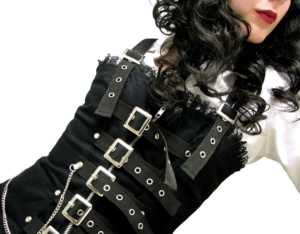Like any other subculture, it is nearly impossible to pinpoint exactly when and where it all began. While typical views tend to state that it began to gain steam in the late 1970's, possibly in England, nobody can say that with 100% certainty. And over time, the nature of what it means to be Goth has evolved and continues to do so.
But to this day, this dark and mysterious subculture still faces a lot of stereotypes and labels that often are not even close to reality.
Here are the more accurate responses to popular media and society driven misconceptions:
1. They are not all mean and always depressed.
2. They are not all on drugs nor are they all promiscuous, and what have you. These are habits people from all walks of life can and often do have (take a look around you).
3. They are not all normally just young teens going through a phase. While this can be the case, there are many Goths living the lifestyle into their thirties and well beyond.
4. It is not just about the way one dresses and you don't have to look the part all the time.
What Goth is and is not cannot be easily defined or put into some box. There are many different styles within the subculture itself including but not limited to Cyber, Punk and Victorian. Style preferences range from those who choose to wear black from head to toe to flaunting colors like hot pink that are anything but dark. And even style itself is not all that important, it's more about an attitude or state of mind.
Like any other group that is "different," some of the more mainstream types sometimes come down hard on Goths. But the truth is, they can be, and often are in many ways, just like everybody else.

